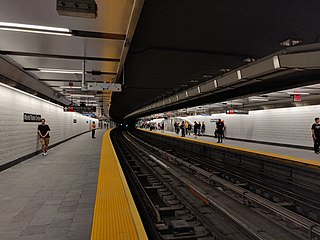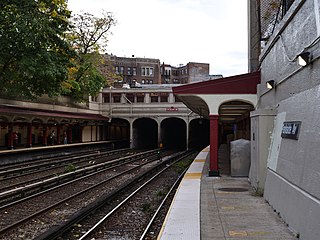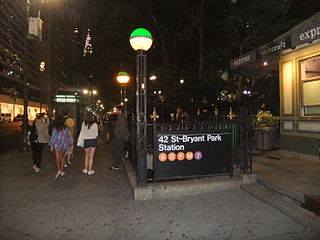M-theory is a theory in physics that unifies all consistent versions of superstring theory. Edward Witten first conjectured the existence of such a theory at a string theory conference at the University of Southern California in 1995. Witten's announcement initiated a flurry of research activity known as the second superstring revolution. Prior to Witten's announcement, string theorists had identified five versions of superstring theory. Although these theories appeared, at first, to be very different, work by many physicists showed that the theories were related in intricate and nontrivial ways. Physicists found that apparently distinct theories could be unified by mathematical transformations called S-duality and T-duality. Witten's conjecture was based in part on the existence of these dualities and in part on the relationship of the string theories to a field theory called eleven-dimensional supergravity.
In physics, string theory is a theoretical framework in which the point-like particles of particle physics are replaced by one-dimensional objects called strings. String theory describes how these strings propagate through space and interact with each other. On distance scales larger than the string scale, a string looks just like an ordinary particle, with its mass, charge, and other properties determined by the vibrational state of the string. In string theory, one of the many vibrational states of the string corresponds to the graviton, a quantum mechanical particle that carries the gravitational force. Thus, string theory is a theory of quantum gravity.

In algebraic geometry, a Calabi–Yau manifold, also known as a Calabi–Yau space, is a particular type of manifold which has properties, such as Ricci flatness, yielding applications in theoretical physics. Particularly in superstring theory, the extra dimensions of spacetime are sometimes conjectured to take the form of a 6-dimensional Calabi–Yau manifold, which led to the idea of mirror symmetry. Their name was coined by Candelas et al. (1985), after Eugenio Calabi who first conjectured that such surfaces might exist, and Shing-Tung Yau (1978) who proved the Calabi conjecture.

The New York City Subway is a rapid transit system owned by the government of New York City and leased to the New York City Transit Authority, an affiliate agency of the state-run Metropolitan Transportation Authority (MTA). Opened on October 27, 1904, the New York City Subway is one of the world's oldest public transit systems, one of the most-used, and the one with the most stations, with 472 stations in operation. Stations are located throughout the boroughs of Manhattan, Brooklyn, Queens, and the Bronx.

Brian Randolph Greene is a leading American theoretical physicist, mathematician, and string theorist. Greene was a physics professor at Cornell University from 1990–1995, and has been a professor at Columbia University since 1996 and chairman of the World Science Festival since co-founding it in 2008. Greene has worked on mirror symmetry, relating two different Calabi–Yau manifolds. He also described the flop transition, a mild form of topology change, showing that topology in string theory can change at the conifold point.
The Second Avenue Subway is a New York City Subway line that runs under Second Avenue on the East Side of Manhattan. The first phase of this new line, with three new stations on Manhattan's Upper East Side, opened on January 1, 2017. The full Second Avenue Line, if and when it is funded, will be built in three more phases to eventually connect Harlem–125th Street in Harlem to Hanover Square in Lower Manhattan. The proposed full line would be 8.5 miles (13.7 km) and 16 stations long, serve a projected 560,000 daily riders, and cost more than $17 billion.
In algebraic geometry and theoretical physics, mirror symmetry is a relationship between geometric objects called Calabi–Yau manifolds. The term refers to a situation where two Calabi–Yau manifolds look very different geometrically but are nevertheless equivalent when employed as extra dimensions of string theory.
The BMT Nassau Street Line is a rapid transit line of the B Division of the New York City Subway system in Manhattan. It is a continuation of the BMT Jamaica Line in Brooklyn after crossing the Williamsburg Bridge into Manhattan; it continues to a junction with the BMT Broadway Line just before the Montague Street Tunnel. Afterwards, the line reenters Brooklyn. Although the tracks continue past Broad Street, there has been no regular service past that station since June 25, 2010. While the line is officially recognized as the Nassau Street Line, it only serves one station on Nassau Street: Fulton Street.

The WTC Cortlandt station, additionally signed as World Trade Center on walls and formerly known as Cortlandt Street and Cortlandt Street–World Trade Center station, is a station on the IRT Broadway–Seventh Avenue Line of the New York City Subway in Lower Manhattan. The station is located under the intersection of Greenwich Street and Cortlandt Way within the World Trade Center. It is served by the 1 train at all times.

The 50th Street station is a bi-level station on the IND Eighth Avenue and Queens Boulevard Lines of the New York City Subway, located at 50th Street and Eighth Avenue in the Hell's Kitchen neighborhood of Manhattan. The lower level, on the Queens Boulevard Line, is served by the E train at all times, and the upper level, on the Eighth Avenue Line, is served by the C at all times except late nights and the A during late nights.

The Prospect Park station is an express station on the BMT Brighton Line of the New York City Subway. Located at Empire Boulevard and Flatbush Avenue in Flatbush, Brooklyn, near the border of Crown Heights, Prospect Heights, Park Slope, and Prospect Lefferts Gardens, it is served by the Q train and Franklin Avenue Shuttle at all times and by the B train on weekdays.
East Side Access is a public works project in New York City that will extend the Long Island Rail Road (LIRR) from its Main Line in Queens into a new station under Grand Central Terminal on Manhattan's East Side. A project of the Metropolitan Transportation Authority (MTA), the new station and tunnels are tentatively scheduled to start service in December 2022. The project's estimated construction cost has risen nearly threefold from the planned $3.5 billion to $11.1 billion as of April 2018, making it one of the world's most expensive underground rail-construction projects.

The Parkside Avenue station is a local station on the BMT Brighton Line of the New York City Subway. It is located at Parkside Avenue and Ocean Avenue in Flatbush, Brooklyn. The station is served by the Q train at all times.

The Lexington Avenue–63rd Street station is a New York City Subway station in Lenox Hill, Manhattan, shared by the IND and BMT 63rd Street Lines. Located at the intersection of Lexington Avenue and 63rd Street, it is served by the:

The Jackson Heights–Roosevelt Avenue/74th Street station is a New York City Subway station complex served by the IRT Flushing Line and the IND Queens Boulevard Line. Located at the triangle of 74th Street, Broadway, and Roosevelt Avenue in Jackson Heights, Queens, it is served by the:

The South Ferry/Whitehall Street station is a New York City Subway station complex in the Manhattan neighborhood of Financial District, under Battery Park. The complex is shared by the IRT Broadway–Seventh Avenue Line and the BMT Broadway Line. It is served by the 1 and R trains at all times, the N train during late nights only, and the W train during weekdays only.

The 42nd Street–Bryant Park/Fifth Avenue station is an underground New York City Subway station complex, consisting of stations on the IRT Flushing Line and IND Sixth Avenue Line, formerly without direct connection, now connected by a pedestrian tunnel. Located at 42nd Street between Fifth Avenue and Sixth Avenue in Manhattan, it is served by the:

The Fulton Street station is a New York City Subway station complex in Lower Manhattan. It consists of four linked stations on the IND Eighth Avenue Line, the IRT Lexington Avenue Line, the BMT Nassau Street Line and the IRT Broadway–Seventh Avenue Line. The complex is served by the 2, 4, A, and J trains at all times. The 3, 5, and C trains stop here at all times except late nights, and the Z stops during rush hours in the peak direction.

The 96th Street station is a station on the IND Second Avenue Line of the New York City Subway. Located at the intersection of Second Avenue and 96th Street on the border of the Upper East Side/Yorkville and East Harlem neighborhoods in Manhattan, it is the northern terminus for the Q train at all times. It is also served by limited southbound rush hour N trains and one northbound morning rush hour R train. The station is the terminus for the first phase of the Second Avenue Line.

The Second Avenue Subway, a New York City Subway line that runs under Second Avenue on the East Side of Manhattan, has been proposed since 1920. The first phase of the line, consisting of three stations on the Upper East Side, started construction in 2007 and opened in 2017, ninety-seven years after the route was first proposed. Up until the 1960s, many distinct plans for the Second Avenue subway line were never carried out, though small segments were built in the 1970s. The complex reasons for these delays are why the line is sometimes called "the line that time forgot".













